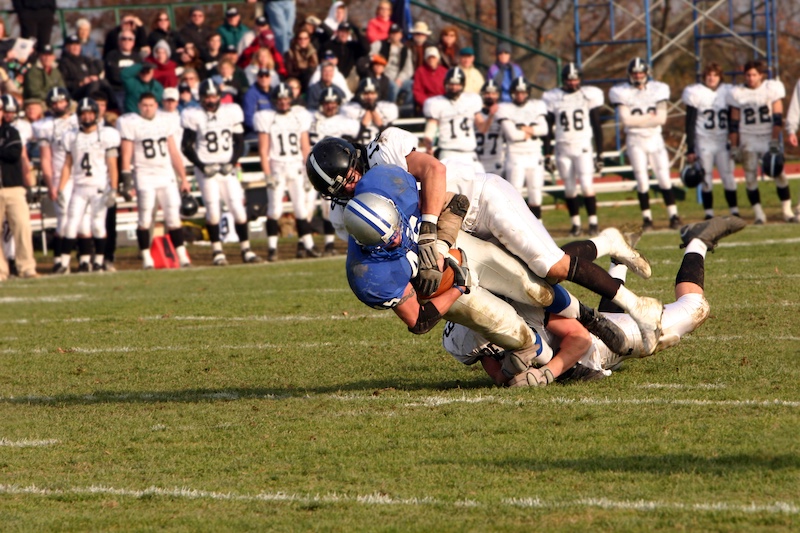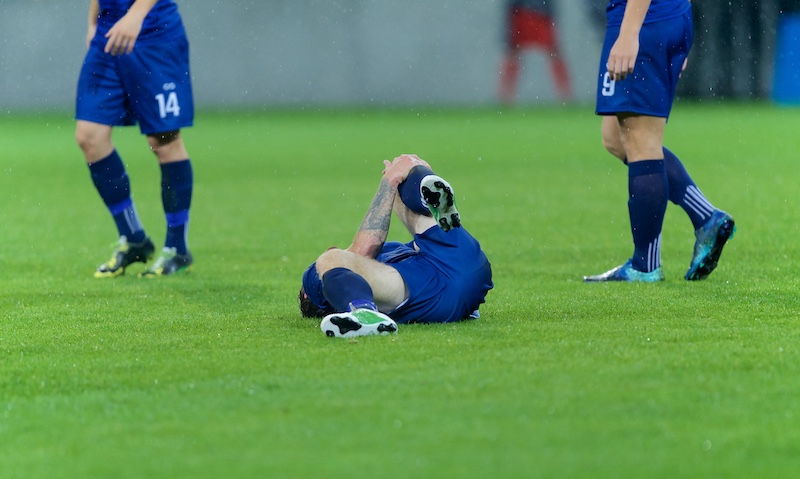Date: 17/01/2025
In sports, people often dismiss head injuries as just another part of the game. You see a player take a hard hit, they shake it off, and they’re back in action. But there’s often more going on than meets the eye.
Concussions can be sneaky. They’re hidden, silent brain injuries that are often not detected early on. A head impact can have consequences far more severe than just a headache, whether in sports or elsewhere. Understanding their true impact is crucial for proper management.
Let’s dive into some facts about these silent injuries.

Fact 1: ‘Second Impact Syndrome’ is a real risk
Second impact syndrome is a risk that happens when a person suffers another concussion before fully
recovering from the first. Sometimes, the first hit may not cause obvious symptoms, leaving the player
vulnerable to a second impact that can lead to further brain damage.
Because the brain is still healing, even a small secondary hit can have serious effects. Careful management
and slow return-to-play protocols are key to preventing this dangerous condition..
Fact 2: Symptoms may not show up immediately
Concussion symptoms don’t always appear right away. This delay can make it hard to tell how serious the
injury is right after it happens. In professional sports, doctors only have a short window to evaluate players,
which can lead to potential misdiagnoses.
In community sports, where there often aren’t on-call medics, it is crucial to keep anyone suspected of having a concussion off the field until symptoms are properly assessed.
Fact 3: Helmets don’t prevent concussions
Helmets and headgear are great for preventing cuts and other superficial injuries, but they don’t prevent
concussions. Concussions happen when the brain shakes around inside the skull, which no helmet can
prevent. So, don’t be fooled into thinking that protective gear alone will keep you safe.

Fact 4: Whiplash can also cause concussions
Concussions don’t just result from direct hits to the head. Even a whiplash effect from a sudden movement or a hit to the body can lead to a concussion. Sometimes, what seems like a small impact can still result in damage to your brain.
Fact 5: There’s a greater injury risk after concussions
Athletes who haven’t fully recovered from a concussion are at a higher risk of getting hurt again, especially when it comes to musculoskeletal injuries. The lingering effects of a concussion can impair a player’s
movements and coordination, making them more prone to tripping or injuring themselves.
We often see this in boxing, where fighters who have accumulated multiple hits may be more susceptible to being knocked out.
Whether it’s sports, school or work—jumping back in too soon can worsen cognitive issues, affecting daily life and performance.

Fact 6: Athletes’ mood swings can be a sign of a concussion
Concussions can lead to sudden emotional changes, making people feel unusually angry or emotional. It’s
often seen right after a hard hit in sports. This can be challenging for medics to manage, as the injured athlete is on an ‘adrenaline high’ and is likely eager to return to the game despite their injury. Acknowledging these mood changes is essential for keeping the athlete safe.
Fact 7: No two head knocks are the same
Even if you’re identical twins, a head knock can play out very differently. One twin might end up with a
concussion from a minor bump, while the other might walk away from a big hit without a scratch. The effects of a concussion vary a lot depending on where the brain takes a hit and how severe it is. Some concussions resolve quickly, while others can take months to fully show their effects. There’s no exact formula.

Fact 8: Community sport athletes are at greater risk
Professional athletes benefit from having onsite doctors, multi-angle video replays, and trained referees to
assess injuries in real time. These tools allow experienced medical professionals to analyse injury mechanisms instantly, making it the most effective way to diagnose and manage concussions on the spot.
However, in community sports, players often lack these critical resources. Without real-time medical reviews, even with video replays, there’s no capacity for immediate monitoring by medical professionals.
Fortunately, the BrainEye app bridges the gap by providing an affordable brain health assessment for those without access to professional-level resources. With features like the Post Collision Assessment, the app provides valuable insights that can help you identify risks after a head knock.
Take control of your brain health. Download the BrainEye app today.
More featured blogs
Why tracking brain health trends is critical
Your brain is constantly changing, but subtle shifts can signal potential problems. Learn what brain health trends are and why they’re key to protecting your cognitive well-being.
What you need to know about brain health
Your brain controls everything you do. But how often do you consider its health? Discover insights and practical tips to help you understand and improve your brain health and overall well-being.
Concussions in Kids: What Parents Must Know
Concussions in children can be difficult to detect, but acting quickly can make all the difference. We explore a real-life example and share essential tips on spotting signs and managing your child’s recovery.
Discover more about how BrainEye works, or download the app via the Apple App Store or Google Play Store.

